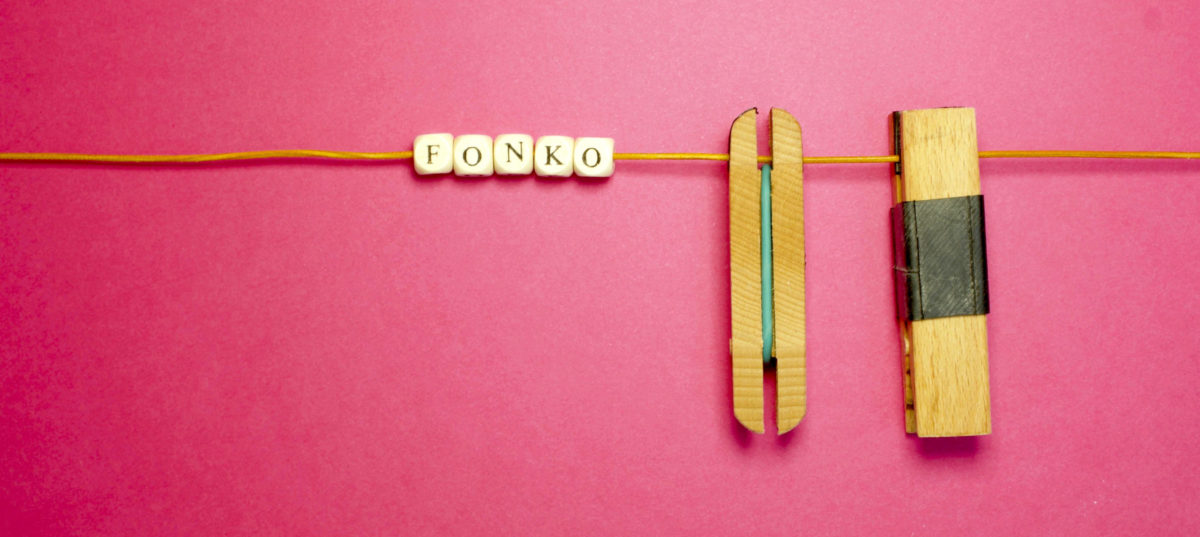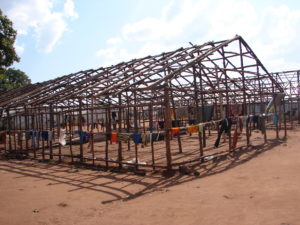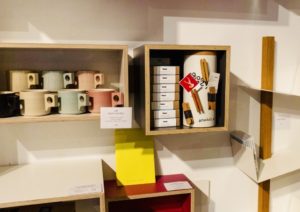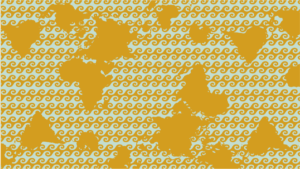This thing. Two sticks, the length of an index finger, the upper end tapered, the lower third bound together with a rubber band. Derived from the need to quickly clip something together. Amin might as well have thrown it away after it had fulfilled its purpose. But he did not.
For once it was there it claimed it’s right to exist at weserholz. So we decided to explore it together and to find out what it could tell us. And the more we devoted ourselves to this tiny peg, the more it did tell us.
In the English language there is a saying for this kind of exploration: ʺgoing down the rabbit holeʺ describes the state of a person who is completely drawn in by a topic or object. This idiom refers to ʺAlice in Wonderlandʺ: Just follow the rabbit into its warren and the next minute you’ll bump into the mad hatter.
Depending on the critical point of view it might seem naive or even presumptuous to creatively potter at an object that is so deeply and naturally rooted in our everyday life like a peg. However, this is essential if not imperative.
For as soon as we cease questioning, re-classifying or giving new meanings to well-established things again and again, we stop being designers. Therefore, it is worthwhile following the peg down its peg hole and explore what’s down there.
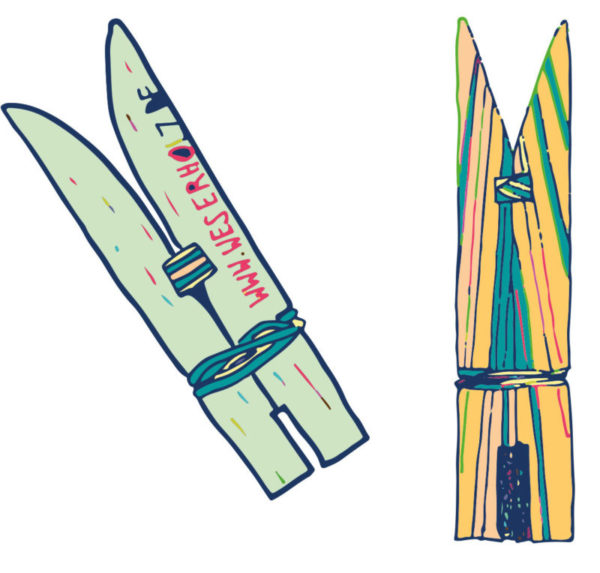
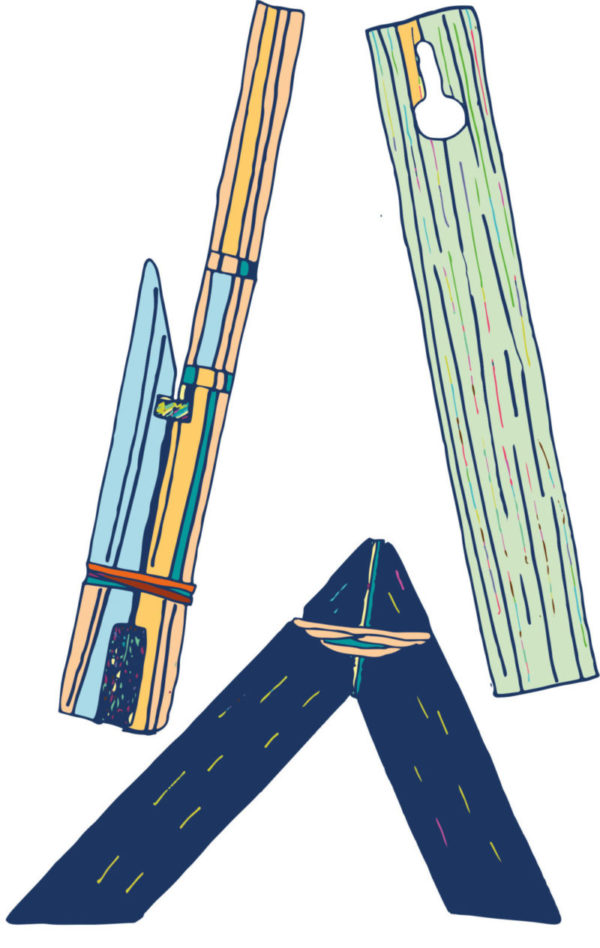
This text can’t be a chronological enumeration of development stages. Because creative development is not a linear but rather a cyclic process. That means: A decision is not based on a preceding one. But before taking the decision it must be questioned over and over again in loops of trying, testing, discarding and re-thinking. New side tracks open up during those decision loops, which in turn give rise to new decision loops: a labyrinth like a Mandelbrot set.
And this the development of pegs can keep an entire team busy for quite some time.
What must a peg be able to do? Are there additional benefits? To what extend does multifunctionality make sense?
There are pegs, combined with lights, to enable people to read in the dark. Everyone who has already tried using such a reading peg knows: Neither do they shed sufficient light nor can they really be fastened to the book cover. At the same time this peg overstrains and patronizes the user. In most cases multifunctionality is rather inconvenient as opposed to useful.
There is one thing pegs need to be really good at: keeping things in a certain place. They do this by exerting tension, pressure and leverage. This characteristic is the essence of their nature and we should devote all of our creative attention to it: The fonko design is the cultivation of tension.
Old inner tubes of bikes, cut to shape and pulled over the legs of the peg, generously distribute the force via the center of the peg. Scratches and irregularities, sometimes even a patch tell of their former life on the road. The rubber bands, on the other hand, are of a very different nature: available in two color variants that are produced especially for fonko, they lie in a groove in parallel to the legs of the peg. Releasing their force selectively they make the peg appear subtler. One tends to attribute character traits to fonko’s tension which manifests itself in two different degrees: one being strongly gripping, the other rather elegant.
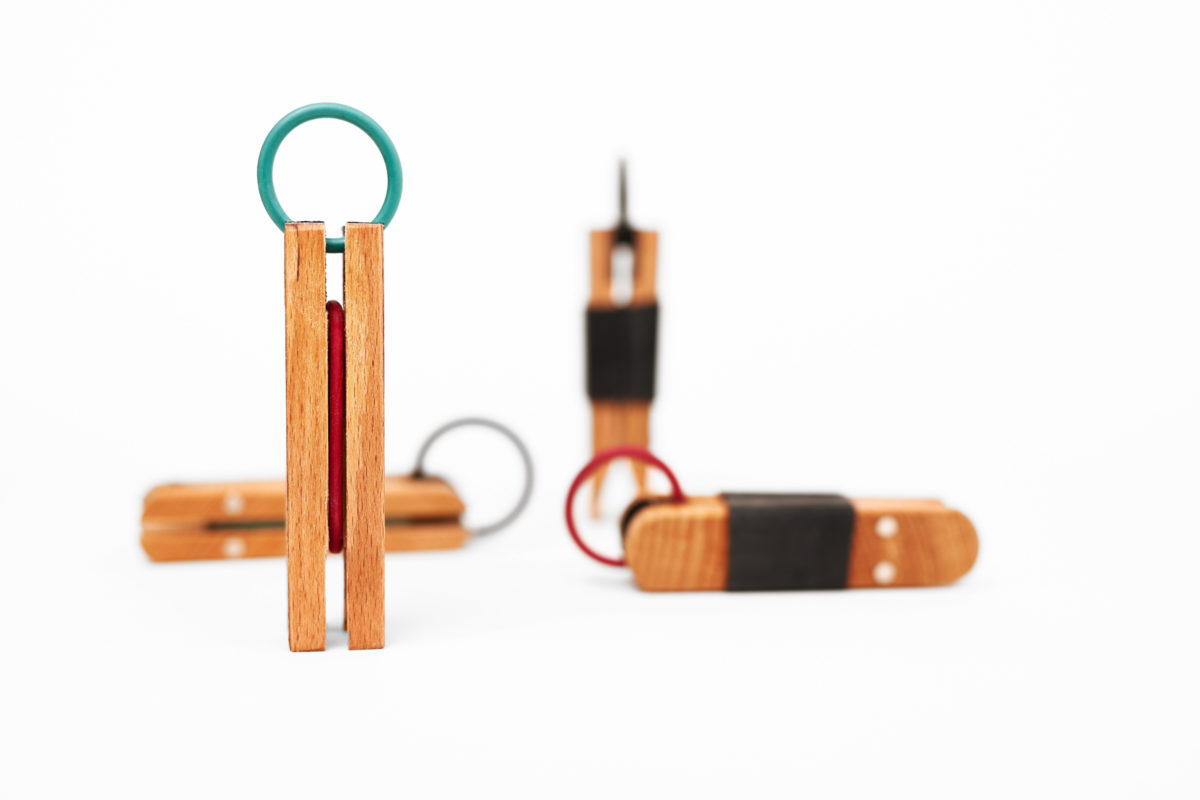
During its development fonko kept showing us the strength required to not only penetrate an object from a creative point of view but to also master it in production.
Production and design are mutually dependent. While developing fonko we were faced with challenges we hadn’t anticipated: The crosspieces between the legs of the peg are too thin, the crosspieces between the legs are too thick. Why do the rubber bands tear? Having new rubber bands produced, discussing colors. Minimizing but also accepting tolerance values and deviations. Testing adhesives, testing rubber pads, making saw templates, trying out grinding techniques, purchasing new machines. How many pegs can we make in one hour?
We (currently still) produce fonko at our own joinery, manually and in small numbers: Every single peg will have been picked up about 15 times before it’s eventually packaged. And all this creative and production effort only for pegs?
Well, of course. For sometimes you need to follow the rabbit down the peg hole to realize what really binds us together in our daily life. By the way: the fruit gum mix ʺWonderlandʺ is one of our favorites at weserholz. Coincidence? Well, certainly not.
written by our head of Design >> Anselm Stählin
translated by >> Sabrina Lehner-Liedtke
printed in our >> Bulletin No2
weserholz goes english
You want to follow down the rabbit hole to find out more about our design process, our way of combining entrepreneurship with social responsibility or get to know who stands behind?!

